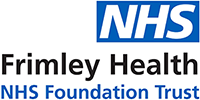Patella dislocation
This is when your knee cap comes out of joint.
NHS Virtual Fracture Clinic - Patella dislocation
Healing:
It can take approximately 6 weeks for this injury to heal.
Smoking will slow down your healing. We would advise that you stop smoking while you fracture heals. Talk to your GP or go to www.smokefree.nhs.uk for more information.
Pain and swelling:
Your knee will be swollen and you will have some pain. Swelling is often worse at the end of the day.
Taking pain medication, elevating your knee and using ice or cold packs will help. More information is on the next page.
It is normal to have mild pain and swelling for 3-6 months.
Walking and your brace:
The knee brace must be worn day and night. You can only take it off to wash or use a cold pack. You must keep your knee straight and replace the brace when you are finished.
You are allowed to put weight through your leg. You may find it easier to use crutches in the early stages.
Exercises:
It is important to start exercises as soon as possible. Instructions are below.
Follow up:
You will see a knee specialist approximately 2 weeks after your injury. They will tell about the next stage of your rehabilitation. If you have not received your appointment letter within 1 week, please contact us.
Any questions:
If you are concerned about your symptoms, unable to follow this rehabilitation plan or have pain other than at your knee, please contact the Virtual Fracture Clinic team.
Caring for your injury
Remember to wear your brace. The specialist will tell you when you no longer need the brace. This video provides you with a guide for fitting your brace: https://vimeo.com/386673392
Using a cold pack will help with your pain and swelling. You can use an ice pack or bag of frozen peas wrapped in a damp towel. Put this on your knee for up to 15 minutes every few hours. Make sure the ice is not in direct contact with your skin.
Try to rest your knee, especially in the first 24-72 hours. Raise your leg on a stool or cushions to that it is above the level of your hip. This will help to reduce your swelling.
Exercises:
Early movement of the ankle and foot is important to promote circulation and reduce the risk of developing a Deep Vein Thrombosis (blood clot).
Do these exercises 3-4 times a day. Start straight away, you do not need to push into pain.
Ankle Exercises
Point your foot up and down. Repeat this 10 times.
Static Quadriceps Exercise
Rest with your leg supported and straight.
Gently tense the muscles in your thigh and try to straighten your knee further. Hold for 5 seconds and repeat 7-10 times.
Frequently asked questions

